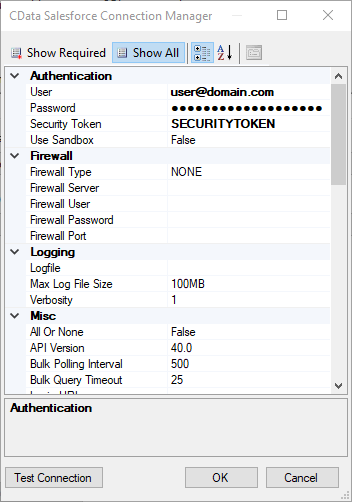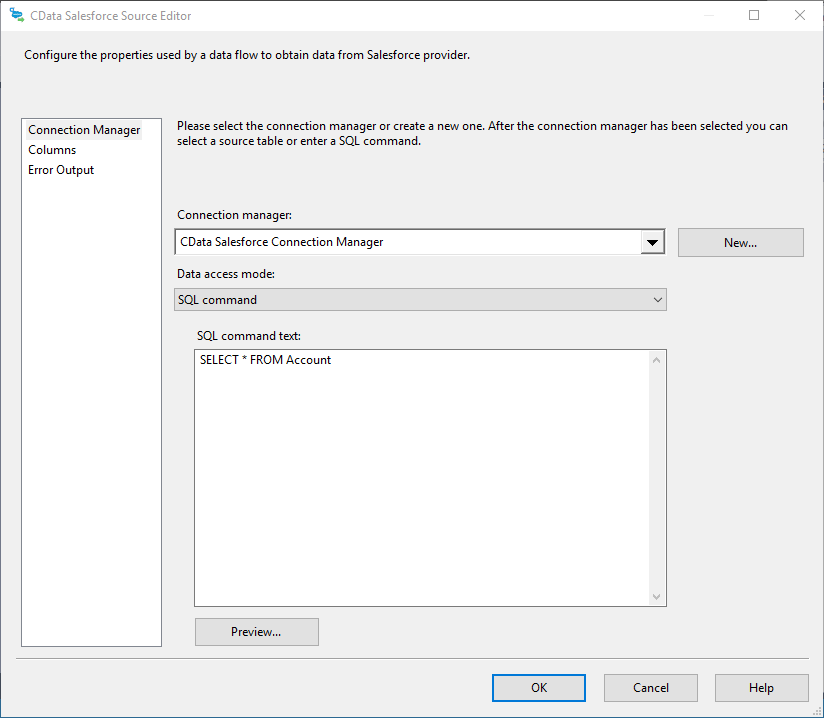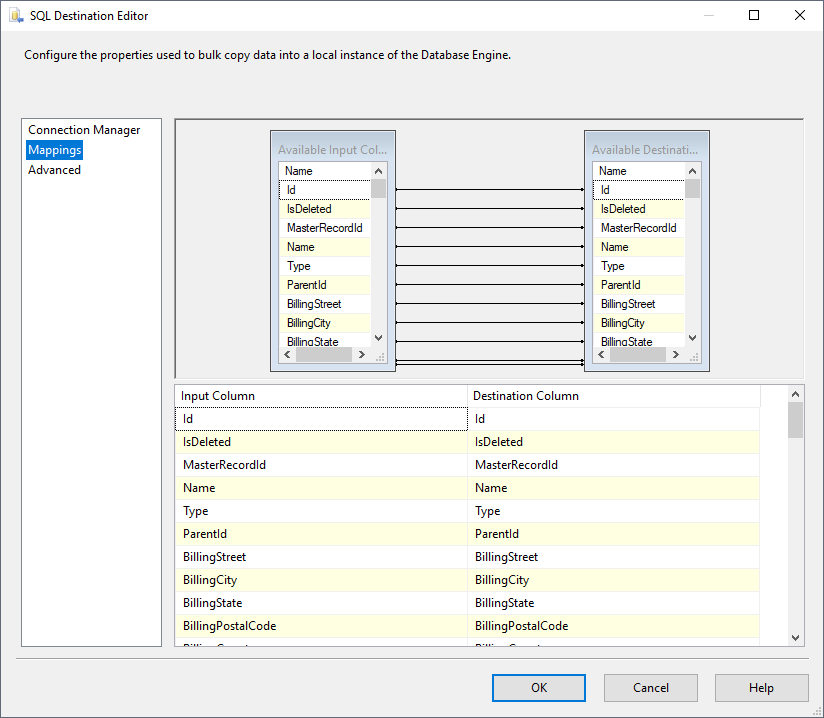Discover how a bimodal integration strategy can address the major data management challenges facing your organization today.
Get the Report →Import Azure Data Lake Storage Data into SQL Server using SSIS
Easily back up Azure Data Lake Storage data to SQL Server using the SSIS components for Azure Data Lake Storage.
Using SQL Server as a backup for critical business data provides an essential safety net against loss. Backing up data to SQL Server enables business users to more easily connect that data with features like reporting, analytics, and more.
This example demonstrates how to use the CData SSIS Tasks for Azure Data Lake Storage inside of a SQL Server SSIS workflow to transfer Azure Data Lake Storage data into a Microsoft SQL Server database.
Add the Components
To get started, add a new Azure Data Lake Storage source and SQL Server ADO.NET destination to a new data flow task.

Create a New Connection Manager
Follow the steps below to save Azure Data Lake Storage connection properties in a connection manager.
- In the Connection Manager window, right-click and then click New Connection. The Add SSIS Connection Manager dialog is displayed.
- In the Connection Manager type menu, select ADLS. The CData Azure Data Lake Storage Connection Manager is displayed.
- Configure connection properties.
Authenticating to a Gen 1 DataLakeStore Account
Gen 1 uses OAuth 2.0 in Azure AD for authentication.
For this, an Active Directory web application is required. You can create one as follows:
To authenticate against a Gen 1 DataLakeStore account, the following properties are required:
- Schema: Set this to ADLSGen1.
- Account: Set this to the name of the account.
- OAuthClientId: Set this to the application Id of the app you created.
- OAuthClientSecret: Set this to the key generated for the app you created.
- TenantId: Set this to the tenant Id. See the property for more information on how to acquire this.
- Directory: Set this to the path which will be used to store the replicated file. If not specified, the root directory will be used.
Authenticating to a Gen 2 DataLakeStore Account
To authenticate against a Gen 2 DataLakeStore account, the following properties are required:
- Schema: Set this to ADLSGen2.
- Account: Set this to the name of the account.
- FileSystem: Set this to the file system which will be used for this account.
- AccessKey: Set this to the access key which will be used to authenticate the calls to the API. See the property for more information on how to acquire this.
- Directory: Set this to the path which will be used to store the replicated file. If not specified, the root directory will be used.
![Configuring a connection (Salesforce is shown).]()
Configure the Azure Data Lake Storage Source
Follow the steps below to specify the query to be used to extract Azure Data Lake Storage data.
- Double-click the Azure Data Lake Storage source to open the source component editor.
- In the Connection Manager menu, select the connection manager previously created.
- Specify the query to use for the data extraction. For example:
SELECT FullPath, Permission FROM Resources WHERE Type = 'FILE'![The SQL query to retrieve records. (Salesforce is shown.)]()
- Close the Azure Data Lake Storage Source control and connect it to the ADO.NET Destination.
Configure the SQL Server Destination
Follow the steps below to specify the SQL server table to load the Azure Data Lake Storage data into.
- Open the ADO.NET Destination and add a New Connection. Enter your server and database information here.
- In the Data access mode menu, select "table or view".
- In the Table Or View menu, select the table or view to populate.
- Configure any properties you wish to on the Mappings screen.
![The mappings from the SSIS source component to SQL Server. (Salesforce is shown.)]()
Run the Project
You can now run the project. After the SSIS Task has finished executing, your database will be populated with Azure Data Lake Storage data.










